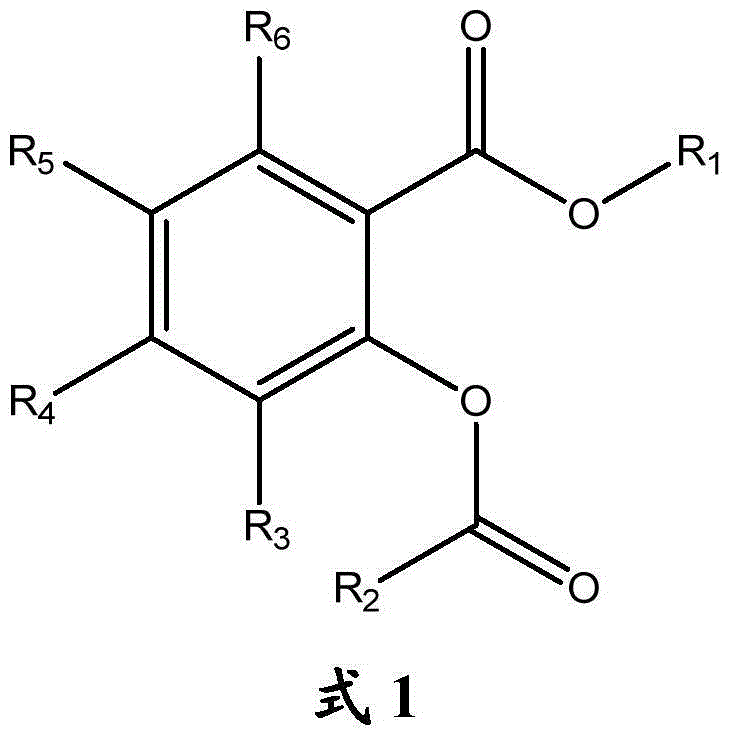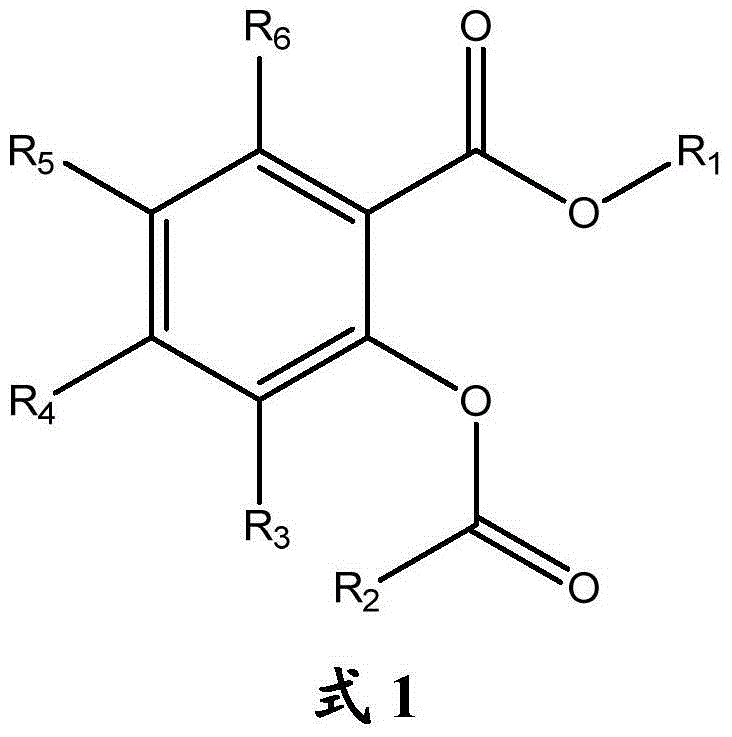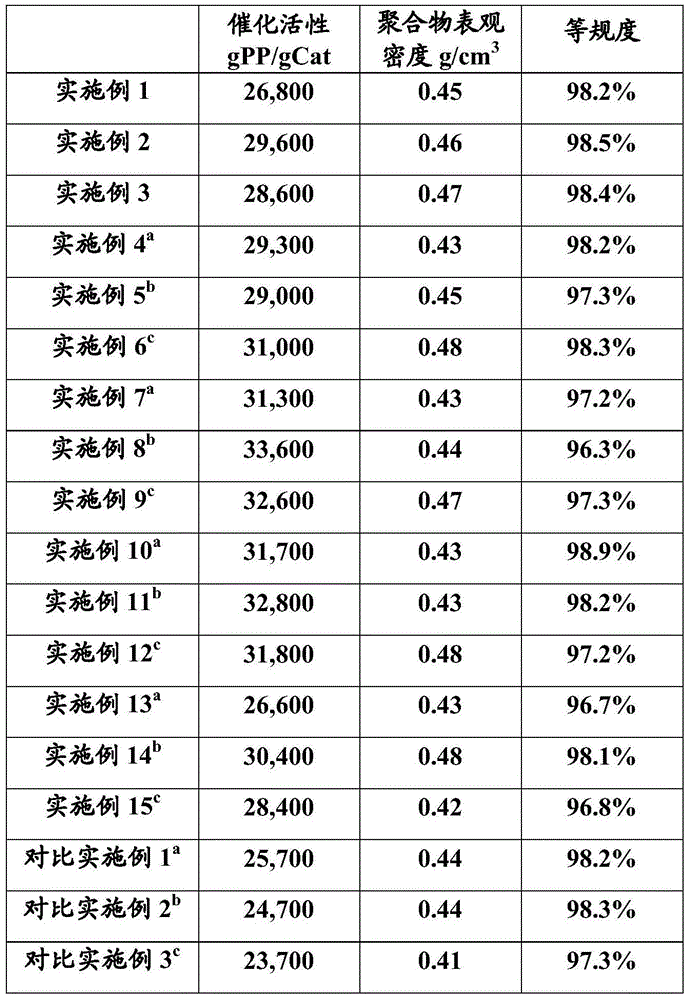Salicylate-compound-containing solid catalyst component for olefin polymerization, and preparation method and application thereof
A technology of solid catalysts and salicylates, which is applied in the field of solid catalyst components for olefin polymerization and its preparation, and can solve problems such as human hazards
- Summary
- Abstract
- Description
- Claims
- Application Information
AI Technical Summary
Problems solved by technology
Method used
Image
Examples
Embodiment 1
[0076] (1) After fully replacing the branched flask with nitrogen, add 4.94g of anhydrous magnesium chloride, 18.9g of dried isooctyl alcohol, and 30mL of dried decane. While stirring, the temperature is raised to 130°C and reacted at this temperature for 2 hours. A homogeneous mixture is obtained. 2.65 g of tetrabutyl titanate and 1.6 g of isobutyl benzyl salicylate were added to 5 ml of toluene, and the reaction was stirred at room temperature for 0.5 h to obtain a homogeneous solution. The above homogeneous solution was transferred to the above mixture, and the reaction was continued at 130°C for 1 hour. After the reaction is over, cool to room temperature to form a stable and uniform alcoholate solution. Seal all joints with parafilm and place them in a desiccator overnight.
[0077] (2) The uniform alcoholate solution prepared above was added dropwise within 1h to a reactor fully replaced by nitrogen and filled with 250ml titanium tetrachloride at -20℃. After the addition ...
Embodiment 2
[0084] The reaction flask with branch tube is fully replaced with nitrogen, add 100ml of titanium tetrachloride to cool to -20℃, then add spherical particles of magnesium chloride alkoxide within 1h, stir and start to rise after full contact, when the temperature rises to 60℃ Add isobutyl benzyl salicylate with a molar ratio of 0.125:1 to magnesium halide, continue to heat up, when the temperature rises to 110°C, continue to add isobutyl benzyl salicylate with a molar ratio of 0.125:1 to magnesium chloride Butyl ester, and react at this temperature for 2 hours. After the reaction is complete, filter out the liquid, add 100ml of titanium tetrachloride, continue the reaction at 110°C for 2 hours, filter out the liquid, wash with dry hexane, and dry in vacuum. The solid catalyst component is prepared. The molar ratio of titanium tetrachloride to alcoholate is 2.8:1. The molar ratio of the total amount of benzyl acyl salicylic acid isobutyl added twice to the magnesium chloride is...
Embodiment 3
[0090] The reaction flask with branch tube was fully replaced with nitrogen, 100ml of toluene solvent was added to cool to 0℃, and then spherical magnesium ethoxide particles were added within 1h, and then 50ml of titanium tetrachloride and the molar ratio of magnesium ethoxide were 0.125: 1 benzyl acyl salicylic acid isobutyl ester, stirring after full contact, start to heat up, when the temperature rises to 60 ℃, add benzyl acyl salicylic acid isobutyl ester with a molar ratio of 0.125:1 to magnesium ethoxylate, Continue to heat up, stop heating when the temperature rises to 110°C, react at this temperature for 2 hours, after the reaction is over, filter out the liquid, add 50ml titanium tetrachloride and 100ml toluene solvent, continue the reaction at 110°C for 2 hours, The liquid is filtered, washed with dry hexane, and dried in vacuum to obtain a solid catalyst component. The molar ratio of titanium tetrachloride and magnesium ethoxide is 2.8:1. The molar ratio of the tot...
PUM
 Login to View More
Login to View More Abstract
Description
Claims
Application Information
 Login to View More
Login to View More - R&D Engineer
- R&D Manager
- IP Professional
- Industry Leading Data Capabilities
- Powerful AI technology
- Patent DNA Extraction
Browse by: Latest US Patents, China's latest patents, Technical Efficacy Thesaurus, Application Domain, Technology Topic, Popular Technical Reports.
© 2024 PatSnap. All rights reserved.Legal|Privacy policy|Modern Slavery Act Transparency Statement|Sitemap|About US| Contact US: help@patsnap.com










